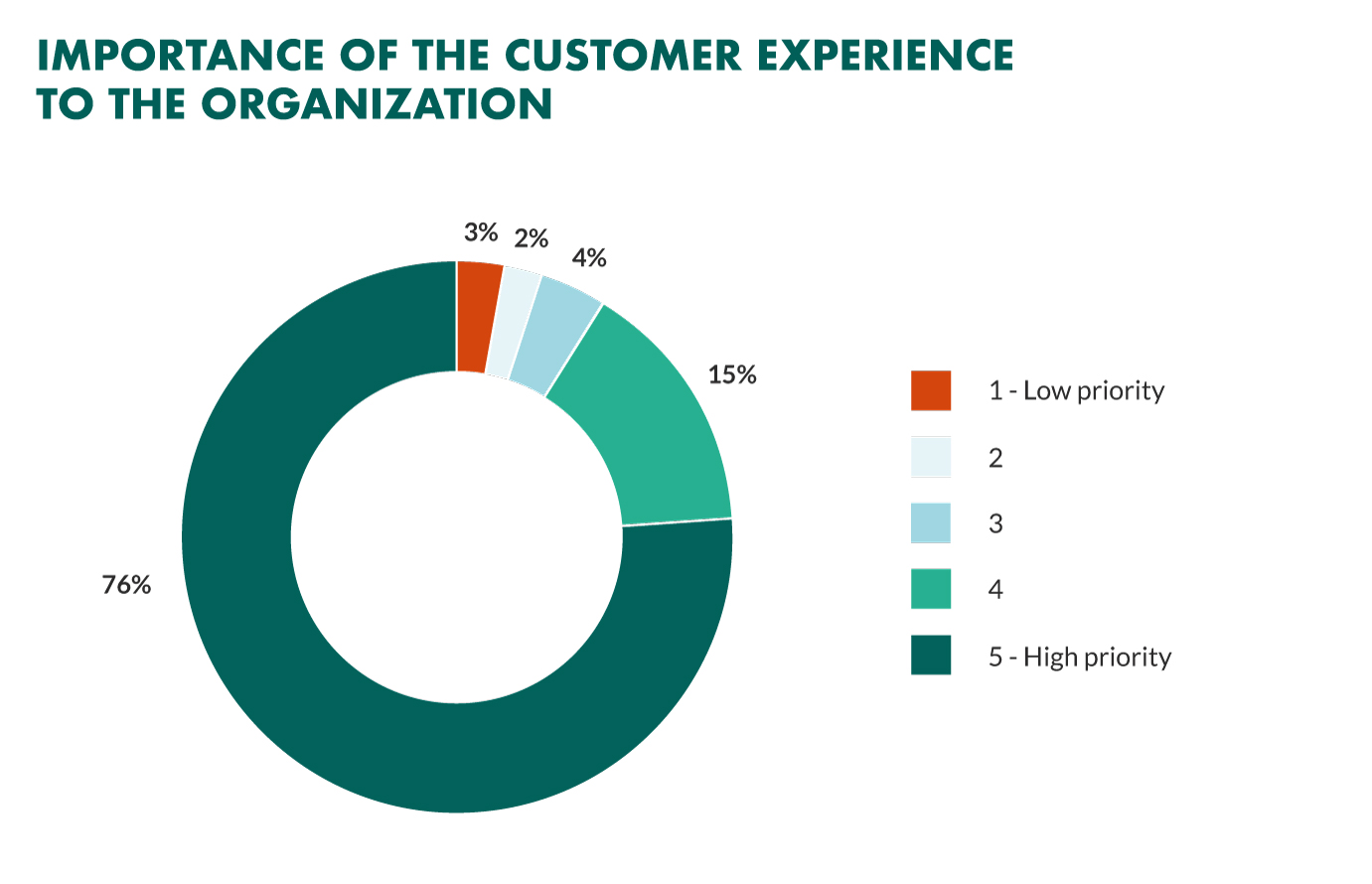Due to the recent technology and digital transformation boom, an entire “customer revolution” has taken place and a new breed of informed and socially engaged Customer 2.0 has appeared.
No longer is price or product the reason why a customer does business with you. Today, it’s all about the customer experience.
To be competitive, you need to go above and beyond expectations and deliver a great experience. But, how?
In this article, we will share how a Customer Relationship Management (CRM) system can help you improve the experience you provide to your customers.
The dawn of the new customer
The tech-savvy Customer 2.0 relates to all things digital, starts his/her purchasing process online, chooses to conduct all research digitally, seeks feedback through social media and prefers emails to phone calls.
In fact, a research shows that 93% of buyers begin their buying process using the internet for search. As a result, they can choose products, services and even people to do business with.
But above all, Customer 2.0 – wants to have an experience!
There’s data to back this up too, as an astounding 86% of buyers are willing to pay more for a great customer experience.
So, how can you adjust to meet the expectations of such a demanding customer?
Customer experience is a top priority
In a survey by Customer Management IQ, nearly 76% of customer management executives and leaders thought that customer experience was of high priority to their business.

PwC’s Digital IQ survey claims that 25% of businesses expect their digital enterprise investments to result in creating a better customer experience.
Furthermore, a study published by Walker states that customer experience will soon be the leading brand differentiator when it comes to a buying decision, leaving behind such criteria as product and price.
So, what is it that you have to do in order to create an exceptional experience for your customers?
You have to be proactive!
This means anticipating and catering for customers’ current and future needs. In order to do that, you need to put yourself into your customers’ shoes and walk a purchase mile with them.
Fortunately, there is technology available to help you proactively accept the challenge called Customer 2.0. And the best technology on the market is CRM software.
Getting started with CRM and customer experience
CRM software enables you to get a 360-degree view of your customer, which you can then use to create highly customized offers based on their interests, purchase history and more.
Let’s take a look at how you can use CRM software to improve the experience of your customers.
1. Keeping in touch
A great customer experience is impossible without ongoing and meaningful communication. Kevin Stirtz, the author of ‘More Loyal Customers’ said in his book: “Every contact we have with a customer influences their decision as to whether or not they’ll come back. We have to be great every time or we’ll lose them.”
And in this area a CRM system can be a great help, as it is increasingly used as a customer loyalty enhancement tool.
So, how can you make sure that your customers stay satisfied and loyal?
The answer is – by simply keeping in touch!
A CRM system contains a wide range of information about your customers and how they interact with your business – including past activities, conversations and purchases.
Use the data in the system to keep your existing customers updated with company news, offers, sales campaigns, or other initiatives. CRM software also allows you to segment the customers and address the right audience with the right message, instead of sending them all the same type of information.
2. Listening to customers` feedback
Customer 2.0 is very talkative, sharing opinions and information about products through various communication channels, such as social media. So, if you want to be in the loop of what’s hot and what’s not, you’d better start listening what he or she has to say!
One way of doing this is by asking your customers for their opinion. Send them a survey through email marketing and ask them what they think of your products, services, and what you can do to make their experience better. In this way, you will show them that you care – and that’s exactly how you keep your customers happy!
3. Creating personal relationships
“CRM” stands for Customer Relationship Management.
One way you can start creating a unique relationship with a customer is through personalizing your communication.
Customers can contact your company through a variety of channels, including email, phone and website. They can also contact you through different departments, such as sales, marketing and customer service.
CRM software captures all of these conversations over time, regardless of the channel or department they occur in – giving you and your entire company access to the same information. That’s a lot of useful information!
You can use this information to give the customer a unique experience by addressing them by their name, or when they call, knowing exactly what the issue is without having to ask them to repeat themselves.
By personalizing your communication, you will see how your customers’ perception of your company starts to improve.
4. Offering customers what they really want
Customer 2.0 has plenty of choices.
In order to win their heart and wallet you need to proactively offer them a relevant product or service.
A CRM system gives you the knowledge of what your customers need, by telling you what products or services they’re interested in, have asked for or have already bought. You also know what problems they have had before, and whether they were happy with the solutions you offered them.
In other words, a history of your customer interaction recorded in a CRM system helps you offer your customers what they really want, not what you think they want.
With the help of CRM, you can also offer your customers to sign up for updates, as well as opt in or out of messages or activities, which is very important for being compliant with the GDPR.
5. Providing attentive customer support
A unique customer experience also means that you offer help and support to your customers how and when they need it.
Remember, the Customer 2.0 prefers online communication when it comes to solving their problems and handling their complaints.
The good news is that CRM offers exactly that!
Customer service software helps you ensure that no customer inquiry is lost, as each request is logged into a central system that can be accessed online. Once a customer sends in a request, you can set up the system to automatically send an email to inform the customer you have received it.
This email can include a tracking number, information about the received inquiry and even suggest helpful FAQs and links to other self-help resources, such as the knowledge base. This way, all customer requests receive attention and don’t disappear into the unknown.
6. Responding quickly to requests
When the Customer 2.0 has a question, they want an immediate response. There’s no time for delay in today’s world. So, if you don’t respond in a timely manner, you risk losing him!
Given their impatience, you would think that companies would respond quickly to customer requests. Yet, we found this to be quite the contrary in our very own Customer Service Benchmark Report.
For example, we found that 62% of surveyed companies didn’t respond to customer support emails at all!
Furthermore, the average response time is more than 12 hours.
With the CRM software, you can speed up your responses to customer inquiries by using ready-made email templates. With pre-made templates, you can answer the most frequently asked questions quickly by selecting the template from the system.
Another benefit of using templates is that each email is consistent with your brand’s tone of voice.
7. Keeping up with the customer needs
Customer 2.0 demands not only to be listened to, but they also want to be responded to on their terms, not yours. This means that you will have to connect with your customers at a time, place and in the form that they choose!
Since Customer 2.0 has online access to many competing offers, you need to increase the speed at which you can present your own offers. Otherwise, you risk losing deals.
One way to speed up the communication is by using CRM!
When the fate of new business is a matter of minutes, being able to access all customer information and offer a suitable product is very important.
Mobile CRM allows you to provide a better customer experience by being able to instantly offer the latest information on the products, deals and contracts, as well as to quickly answer customer questions - whether you’re in the office or out on the road – so you never have to keep your customers waiting.
In addition, Mobile CRM helps you to follow up on leads and opportunities at the right time – so there’s no need to wait until your colleague returns to the office.
Conclusion
In today’s technology-dominated world, customers demand and expect a whole new level of attention. And they expect you to do business with them on their terms.
Customer 2.0 wants you to know who they are, understand their specific situations, keep in touch with them, listen to their needs and provide quick and attentive support.
CRM software helps you to do all of this and more.
With CRM, you can create a full 360-degree view of your customer regardless of who in your company is talking to the customer. It also gives you the chance to:
- personalize your communication,
- offer relevant content and service,
- respond quickly to your customers’ service requests,
- and ensure that no question goes unanswered.
This is what makes for a great customer experience!
Sign up for a free demo and learn more about how the CRM software can help you to offer a better customer experience.
